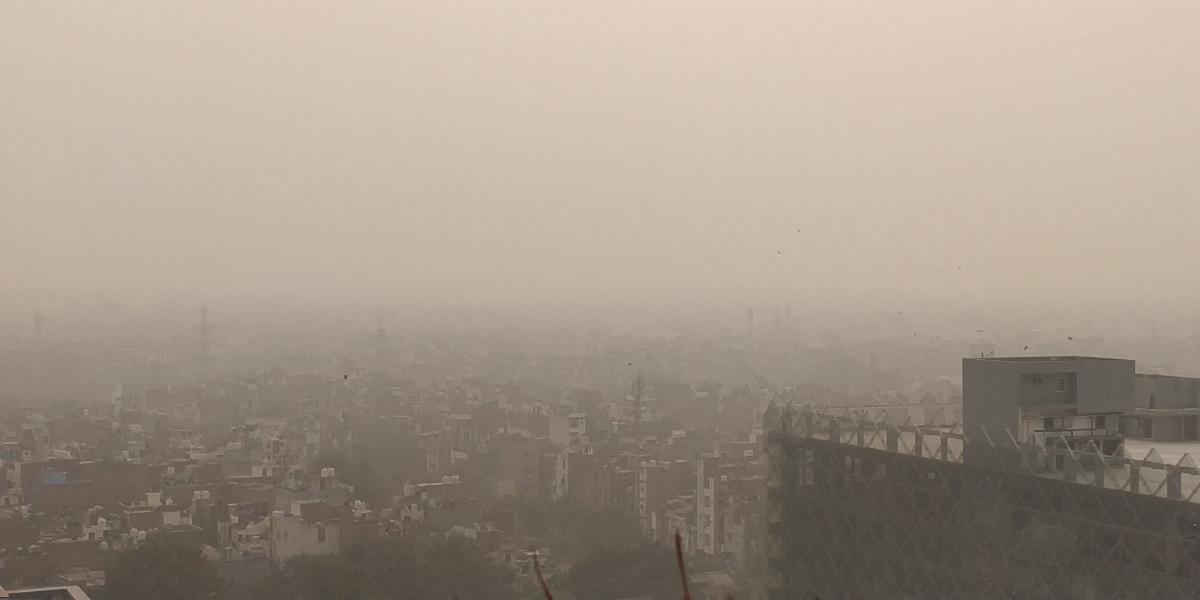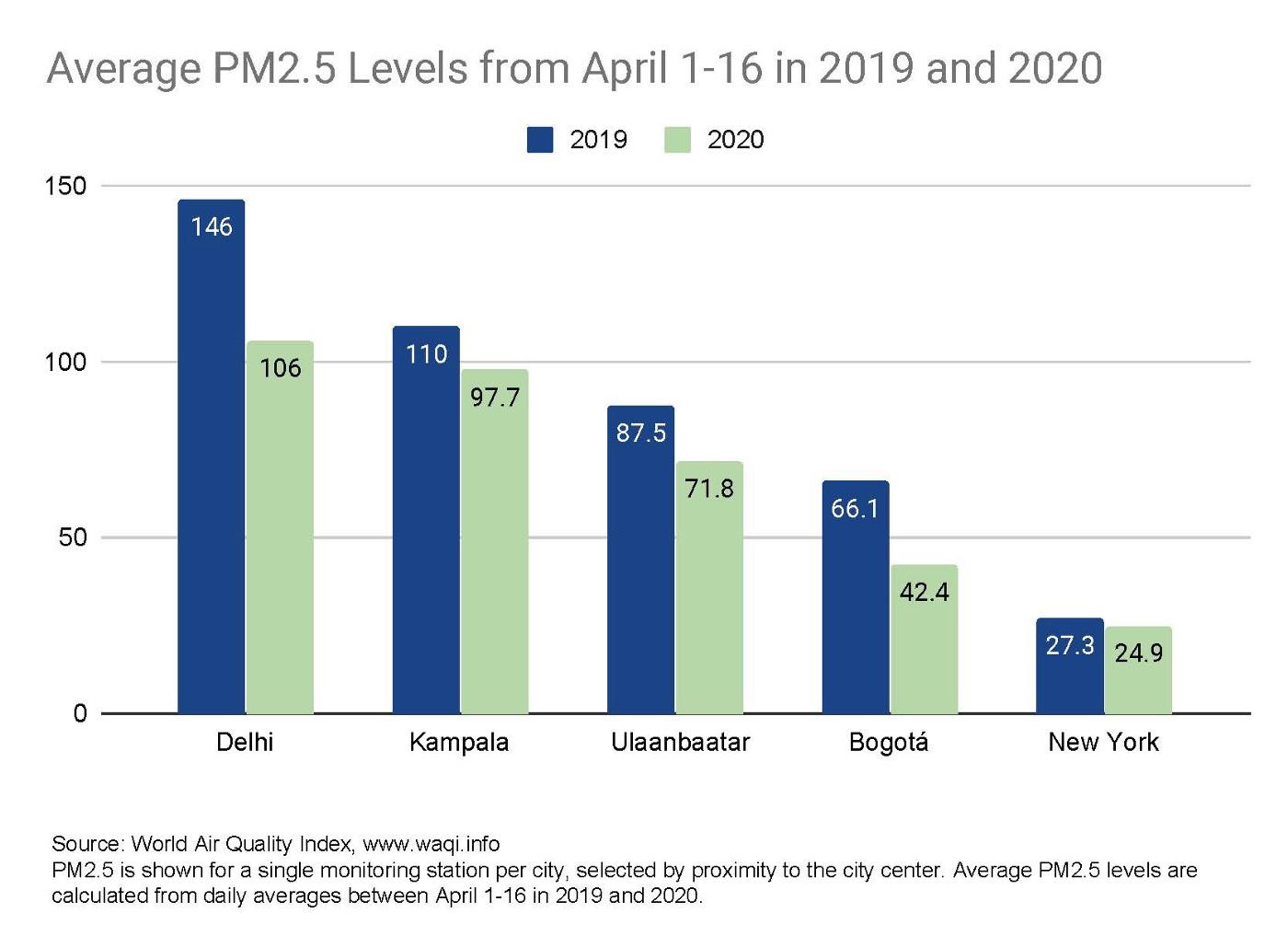
This blog was originally posted by The Center for Effective Global Action as part of a series commemorating Earth Day. View the original post here.
In many cities around the world, April 22, 2020 may be the cleanest Earth Day in decades. Why? Unfortunately, the answer is obvious. Countries around the world have dramatically restricted economic activity, and economic activity is inherently polluting.

The figure on the left shows average pollution levels in several major low- and middle-income country (LMIC) cities during the first half of April, both this year and last year. Around the world, pollution levels have fallen as people stay indoors, factories close and transportation ceases. A comparison of New York City, on the right, with cities in LMICs is revealing. First, air quality in the poorer cities is much worse. Second, it appears more sensitive to changes in economic activity.
Even ignoring the immediate health costs of the coronavirus pandemic, the tradeoff is stark. On the one hand, breathing cleaner air is associated with reductions in morbidity and mortality.
On the other hand, much of the population is suddenly and dramatically poorer, and poverty is clearly bad for health. This tradeoff is most extreme for the most vulnerable members of society, who tend to be disproportionately affected by poor air quality and are also hardest hit by the current economic downturn.
This tradeoff, which has been laid painfully bare by the current crisis, is at the heart of research on the environment in LMICs. Many of the topics that CEGA researchers study — education, health, employment — are clearly aligned with economic growth. This makes the policy prescription relatively straightforward: improve education, health, etc. and the economy is likely to follow. With the environment, it is more ambiguous. Past research, including by CEGA affiliates, shows that as people get richer, their environmental footprint expands, as they consume more energy and contribute more to deforestation. Some might say that makes it a particularly rich area for research by economists.
Five years ago, Michael Greenstone and I published a paper that laid out these tradeoffs. We posed a question, motivated by the patterns shown in the figure above: why is environmental quality so bad in developing countries? Which begs the obvious follow up: how much cleaner should it be?
Answering these questions requires understanding both the costs and the benefits of improving environmental quality in developing countries. Crucially, we need to know how individuals themselves trade off additional income against a cleaner environment. When income levels are low, people are likely to prioritize more income to cover immediate needs, leading to low “willingness to pay” for a cleaner environment. (A similar tradeoff — income versus health risks — underlies current decision making about how and when to lift current restrictions on economic activities.) This may imply, to the discomfort of some, that the higher levels of pollution in LMICs are the rational result of prioritizing growth rather than the result of poor policy making.
Is this short-run thinking? Is a clean environment good for economic growth in the long run? Maybe. This remains unclear. Among other things, it depends crucially on whether we are asking these questions from the perspective of a single household, a country, or the entire planet. Climate change illustrates this point: reducing carbon dioxide emissions today is well aligned with the long run economic health of the planet, but possibly not for the long run economic health of a family in Delhi. A little more income for that family might help them afford an air conditioner, buffering them against future heat waves but contributing to their carbon footprint.
As the current health crisis settles into a long run economic crisis, the challenge of attaining both environmental and economic development goals will be ever more front and center. Tighter government budgets will create a temptation to loosen regulation and spur economic growth at any cost to the environment. Innovation — in both the policy and technology spheres — is crucial for lessening tradeoffs between the economy and the environment in both the short and the long run.
Evidence plays a central role. In the last five years, more and more development economists have turned to research on environmental quality, as CEGA’s growing energy and environment portfolio suggests. On this year’s Earth Day, immediate human needs are more pressing than ever. Finding the right balance with the need for a clean environment is a tremendous challenge and one that can be informed and guided by new research at the intersection of environmental and development economics.



